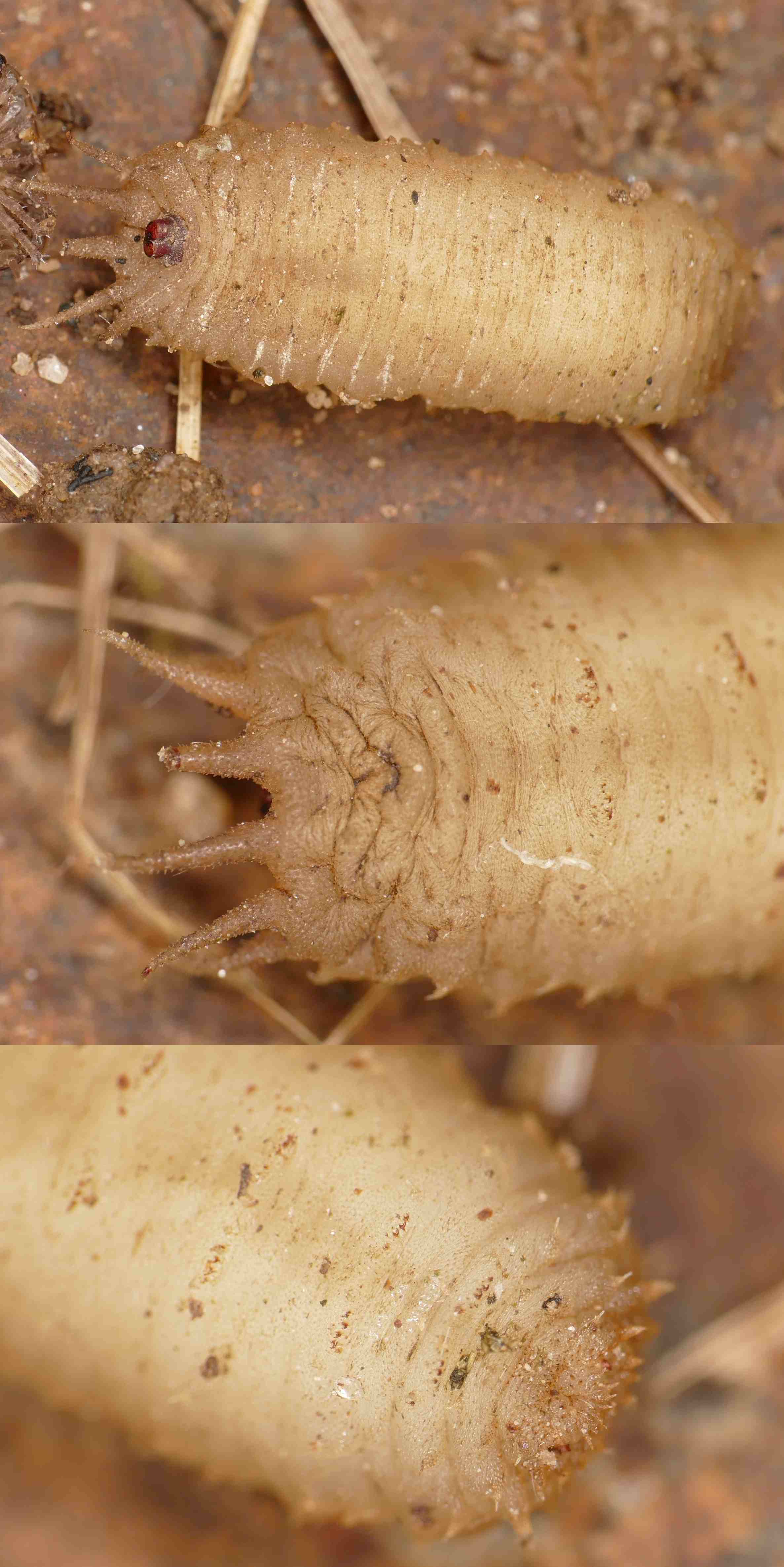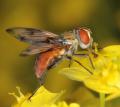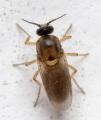Diptera.info :: Identification queries :: Diptera (eggs, larvae, pupae)
Who is here? 1 guest(s)
|
Volucella? > Volucella bombylans
|
|
| Lennart Bendixen |
Posted on 06-02-2017 22:22
|
|
Member Location: Northern Germany Posts: 1171 Joined: 19.12.14 |
What is this? Volucella or sth. related? Length 14 mm. 2016-05-06, northern Germany, garden, stack of cut grass Lennart Bendixen attached the following image:  [291.05Kb] Edited by Lennart Bendixen on 08-02-2017 20:59 |
|
|
|
| atylotus |
Posted on 07-02-2017 11:20
|
|
Member Location: Amsterdam, NL Posts: 1166 Joined: 29.05.09 |
It is a Syprhid, genus Volucella alright, but I'm not sure about the species. As the lateral prolongations are short it looks like V. bombylans as depicted in Ferrar (1987), fig 84.11 and Volucella sp in fig. 84.48. The Key in Dixon (1960) is attached but I'm not sure if your larvae has fleshy projections laterally or not as meant by Dixon (question 7). They are present in your larvae but pretty short. I do not have his paper complete so I cannot check the figures. So if I choose for lateral projections present it keys out as either zonaria or pellucens. however, If I look at Rotheray (1993) in his plate 3f (V. pellucens), your larvae does not have those long lateral prolongations. So I think your larvae would turn out to be V. bombylans. AND: please add your photo's to the gallery. Larvae of this species are missing.. atylotus attached the following file: dixon_1960_key.pdf Edited by atylotus on 07-02-2017 11:25 |
|
|
|
| Lennart Bendixen |
Posted on 07-02-2017 16:12
|
|
Member Location: Northern Germany Posts: 1171 Joined: 19.12.14 |
Great, thanks a lot for your thoughts about it! And for the key - you're right, it's a bit vague without any illustrations. I'd also see small fleshy projections laterally, but if you can exclude V. pellucens, V. bombylans should be correct. It would be interesting how the V. zonaria larvae look like, but anyhow I've never ever seen that species and V. bombylans is quite common here. |
|
|
|
| atylotus |
Posted on 07-02-2017 16:53
|
|
Member Location: Amsterdam, NL Posts: 1166 Joined: 29.05.09 |
In the attachment you'll see V. pellucens according to Rotheray (1993) and following the key in Dixon (1960) the habitus of pellucens is like zonata, but smaller. So you must have bombylans. Good to hear that it fits with your records of bombylans
atylotus attached the following image:  [56.35Kb] Edited by atylotus on 07-02-2017 16:54 |
|
|
|
| Lennart Bendixen |
Posted on 08-02-2017 20:58
|
|
Member Location: Northern Germany Posts: 1171 Joined: 19.12.14 |
Ok! Looks very different indeed. I'll add the pictures to the gallery. Many thanks once again. Edited by Lennart Bendixen on 08-02-2017 21:04 |
|
|
|
| Lennart Bendixen |
Posted on 11-02-2017 19:01
|
|
Member Location: Northern Germany Posts: 1171 Joined: 19.12.14 |
I've tried to add the picture several times - it doesn't work. I'm not getting transmitted to the gallery, but always to the home page. |
|
|
|
| Jump to Forum: |












